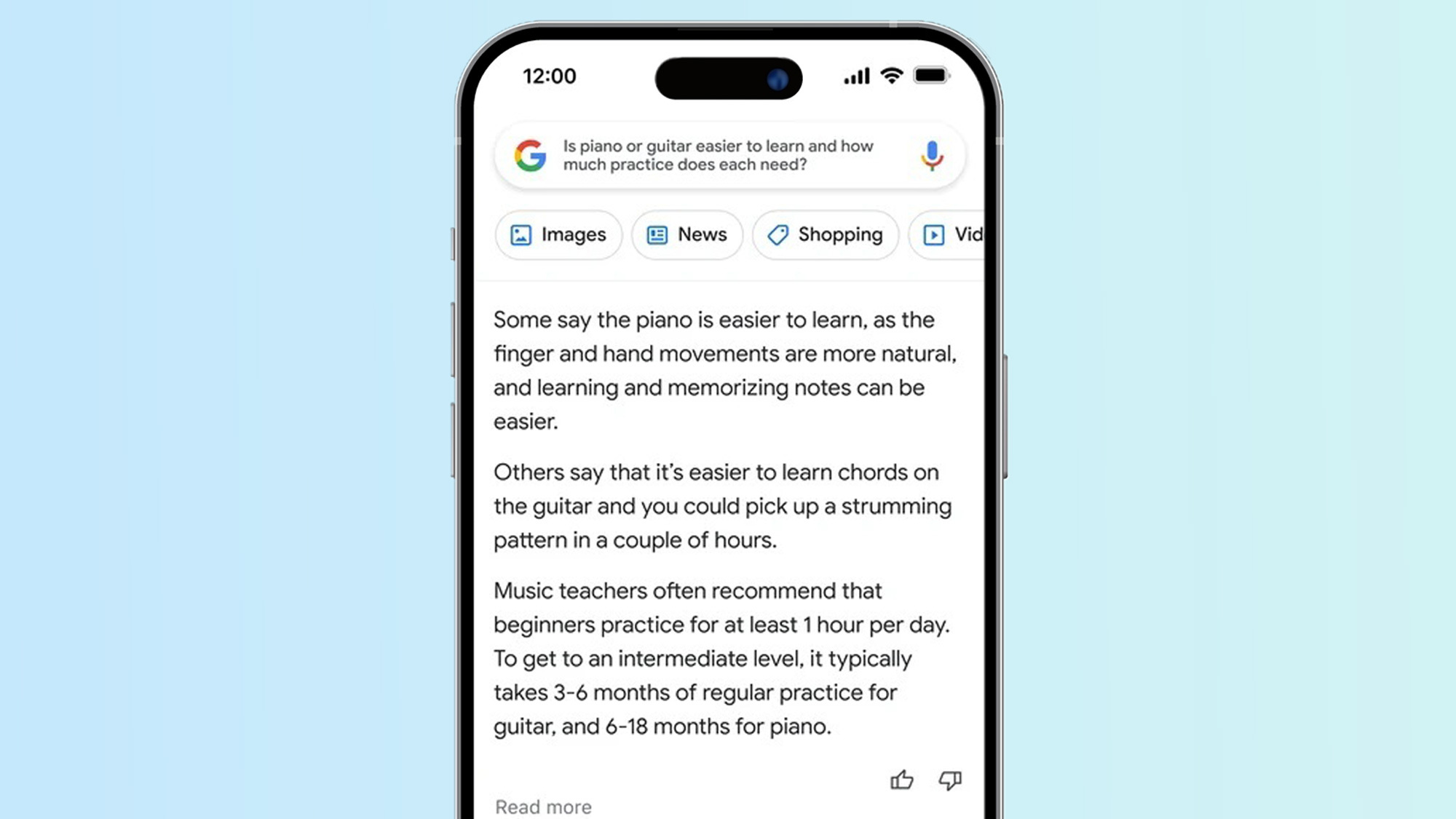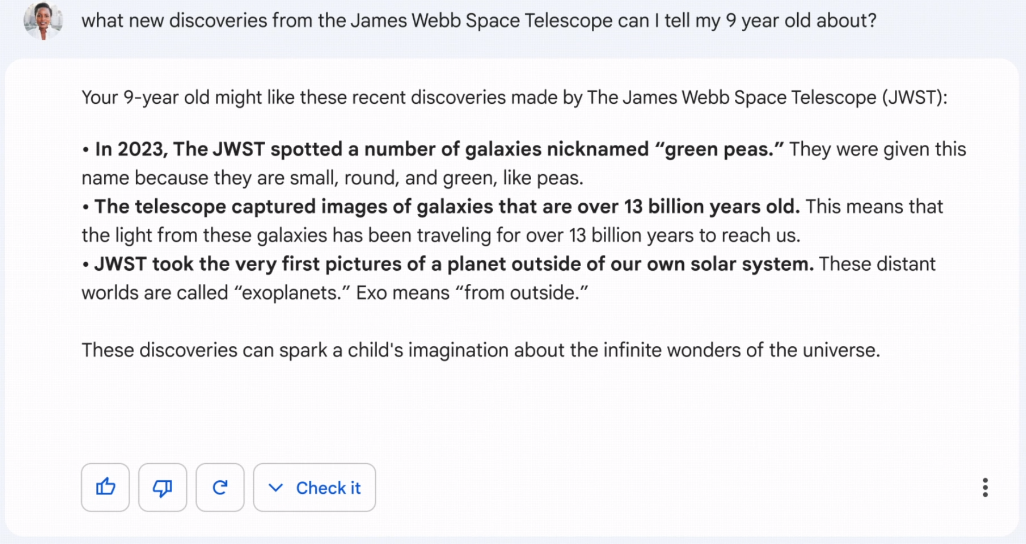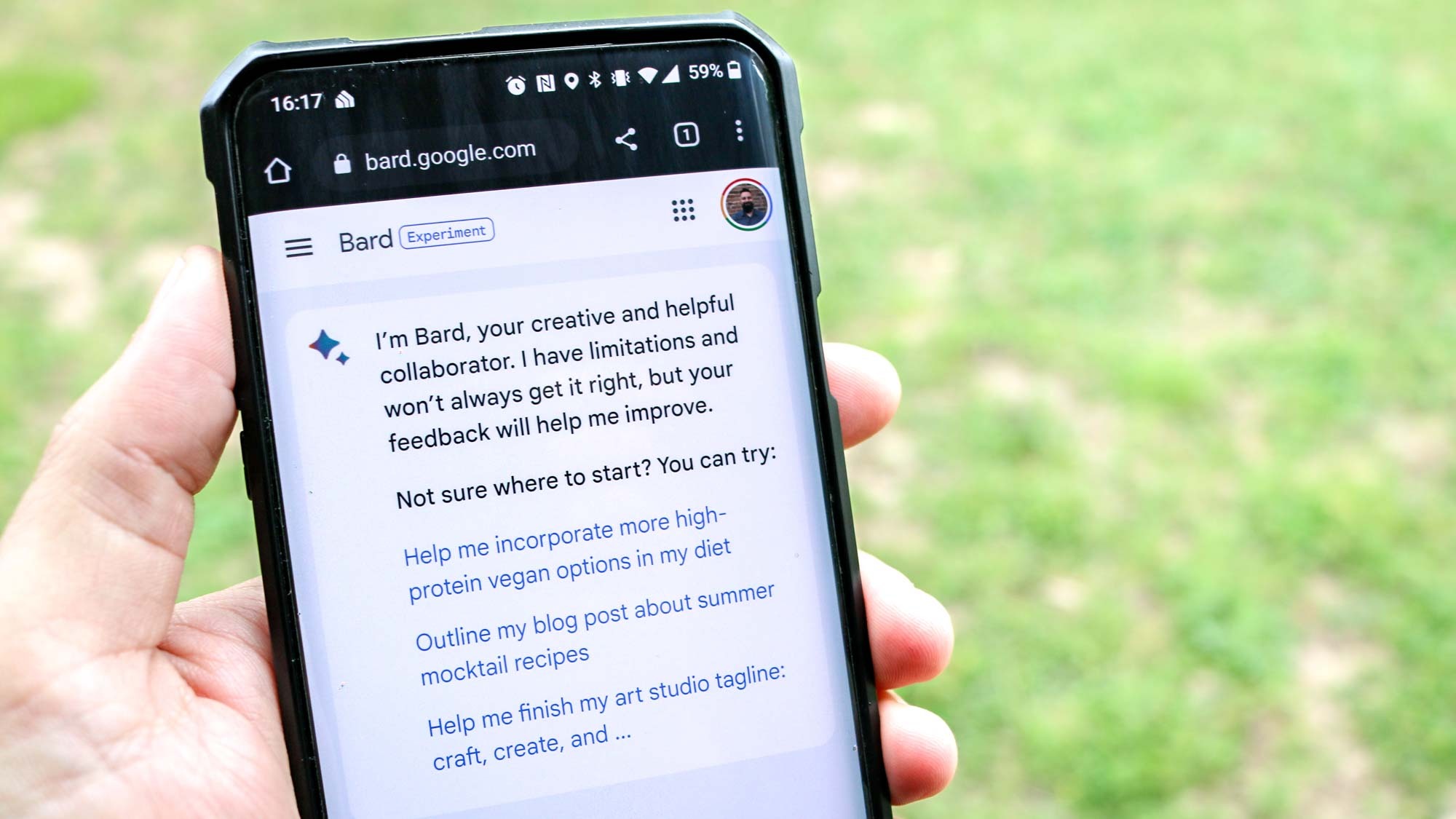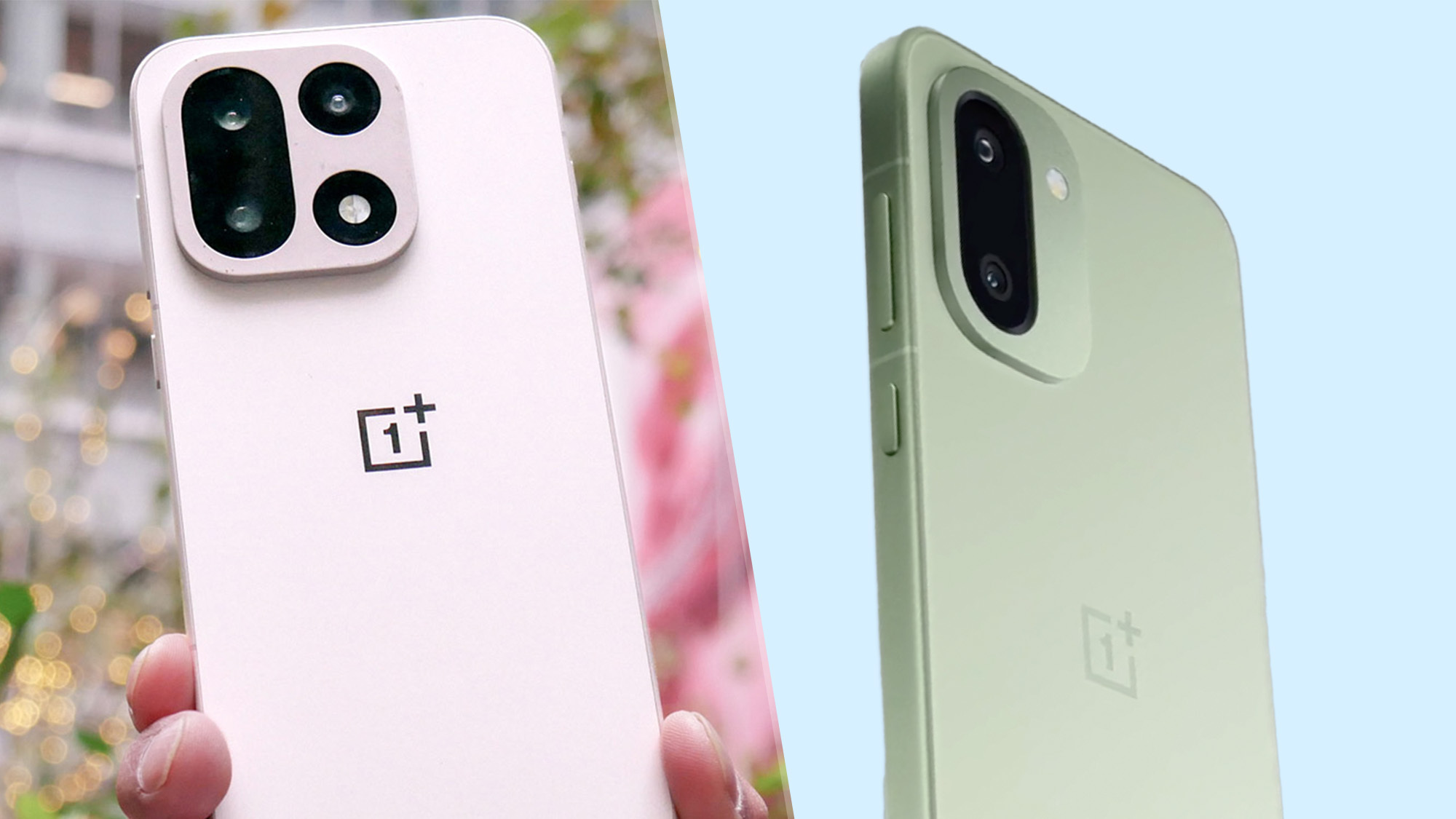What is Google Bard? Everything you need to know about ChatGPT rival

Update: Google Bard is now known as Google Gemini. It is the name for the underlying model that powers the Gemini web chatbot, AI results in Google Search and the Gemini Assistant on Android.
Google Bard is Google's answer to ChatGPT, but it's also different. The chatbot at this stage is an experiment that lets you do everything from planning a birthday party and drafting an email to answering questions on complex topics. It even lets you code and soon will feature an AI image generator thanks to Adobe.
Google is quick to point out some of Bard's responses may be inaccurate. Google sees it as a complementary experience to Google Search — which just got its own huge AI upgrade. Still, you'll see a "Google It" button next to responses when you use Bard that takes you to Search.
Even better news, the Bard waitlist is gone. Initially, Google limited access to Bard AI but now the experimental AI is available in 180 countries and three languages. If you want to test it for yourself, check out our guide on how to use Google Bard.
We will continue to test Bard's features as they are rolled out, but for now, here's everything we know so far about Bard AI.
Google Bard news and updates (Updated November 15)
- Google goes on the attack against Bard malware — here's how to protect yourself
- I cover AI for a living — here's what I'm most excited about from Web Summit 2023
- Google Bard just got 2 big upgrades — here's what you can do now with AI
What is Google Bard?
Google Bard is an AI chatbot, similar to ChatGPT and just like ChatGPT, it is powered by a language model to converse with users.
Initially, Bard used Language Model for Dialogue Applications (LaMDA) for its training so it could become conversational. However, it now also uses Pathways Language Model 2 (PaLM 2) to power Bard's more advanced features such as coding and multimodal search (coming soon).
Get instant access to breaking news, the hottest reviews, great deals and helpful tips.
And Google may be training its AI with the entire internet. A recent change in policy from Google says that the company will use "publicly available information" to "help train Google’s AI models and build products and features like Google Translate, Bard, and Cloud AI capabilities." That's an extremely wide net, given that could include not only YouTube videos but Google Search results.
Google Bard: How does it work?
Much like with other chatbot AIs, Bard is designed to be conversational. That means users interact with it by typing in a query or request into a text box, and then the AI — in this case, Google Bard — will churn out a response using a conversational tone.
For example, if you ask Bard about “what new discoveries from the James Webb Space Telescope can I tell my 9-year-old about” it will search through the information it has been trained with and return with a response to your questions. In this case, that response will be a couple of discoveries from the JWST that you can tell your child about. But be careful to double-check the information Bard provides. Google used this example in a demo and it got the answer embarrassingly wrong.

You can also use images in your prompts thanks to Google Bard's multimodal functionality from PaLM 2. You can also have Bard respond to your prompts with images and videos. Eventually, the chatbot will be able to generate completely new AI images thanks to an Adobe Firefly integration.
These features were announced by Google at I/O 2023 and are expected to roll out in the coming months. They come alongside a wave of big AI upgrades from Google that includes virtual try-on, upgraded Google Lens capabilities and Immersive View — which lets you virtually explore several cities across the globe.
Want more than Bard's multimodal capabilities? Check out our guide to the best AI video generators out there. Each of our five picks has been tested and compared so you know what the best option is for you if you want to create videos using AI technology. We also tested three of the best AI synthetic video generators — these are AI video generators that only need a text prompt — so you can create AI videos easier than ever.
What can you do with Google Bard?

What Bard can do is always changing, but according to Bard itself, the chatbot can generate text, translate languages, write different kinds of creative content and answer your questions "in an informative way." It can also write and debug code in a variety of programming languages. You can even export code directly from Bard.
And when you're not satisfied with the answers, you can click "Google it" and go to Google Search for more insight. This feature initially got a boost in Bard's first "Experiment updates" so that you get an increased number of Search options based on your prompt if you want to explore further. It's since been improved in a major September Bard update.
For what it's worth, Google says you should use this feature whenever you need to verify information. In an interview with the BBC, Google UK executive Debbie Weinstein warned users that they should still Google things when looking for facts to answer questions. She instead describes Bard as a collaborative, creative tool that you should use once you already have the information you need.
We've recently put it to the test in a handful of ways, from asking it controversial sci-fi questions to putting it head-to-head with the new Bing with ChatGPT to see what phone you should buy. Both gave us some enlightenment on Bard's abilities — and shortcomings — so be sure to check them out.
Another thing that Bard could potentially do? Serve as a therapist. Some people have started using ChatGPT and Bard to provide AI therapy due to the chatbots' conversational abilities. Given that these chatbots are liable to get things wrong, we recommend seeking a mental health expert if you are dealing with mental health issues, but chatbots are an interesting supplementary resource.
Plus, there's building evidence that Google has big plans for Bard's future. Google has dropped hints in recent weeks that Bard will start invading your text messages or start screening your calls on Pixel phones. And Bard extensions allow you to connect outside applications to Google Bard to supercharge your productivity. Bard extensions got a major upgrade in the September Bard update, giving you the ability to integrate Bard with Docs, Drive, Flights, Hotels, YouTube and more.
Google has also integrated generative AI into Google Search following the success of Bard AI, so even if Bard doesn't become directly integrated into Google products, the AI features it tests out could become the next great Google app.
Some new Experiment updates have already begun rolling out. Google Bard can now respond using images to add context to text responses, and after testing Bard's new image capabilities we came away relatively impressed. We also tested out its new Export to Sheets feature and while it has a couple of quirks it's a serious time saver. For the latest on what Bard has added, check out our report on 3 ways Google Bard AI is getting better.
Whatever you do with Bard, just be careful what you tell it. Google Search can reportedly index your private conversations, so never provide it with sensitive information.
Does Google Bard plagiarize content?
As we noted earlier, Bard can definitely make mistakes and did in its initial demo. Further testing has also seen it continue to get things wrong, like below when we asked it about the iPhone 14 Pro Max.

At first glance, this example seems fine. But upon closer look, it gets some important things wrong.
First, it states that our testing produced a 12-hour and 40-minute battery life figure. Which it did not — that number came from MacWorld's testing.
Bard also incorrectly lists Phone Arena's testing as producing a 13-hour and 39-minute battery life expectancy. If that figure looks at all familiar to you, that's because our testing produced that number — not Phone Arena's.
One other thing you may have noticed is that Google Bard falls a bit short in providing sources for the information it pulls. While it does cite Tom's Guide and Phone Arena (albeit incorrectly), there are no links provided for those sources. That is a stark contrast from the new Bing chatbot powered by GPT-4, which still gets things wrong but at least gives you the links from which it's (theoretically sourcing information). Google has said that Bard's recent updates will ensure that it cites sources more frequently and with greater accuracy.
Plagiarism is a problem with plenty of chatbot AI, and not just Bard. ChatGPT will not provide citations unless properly asked — which you can learn how to do in our guide to getting the most out of ChatGPT. However, we aren't the only ones that found issues with Bard's plagiarism. In their testing, our sister site Tom's Hardware found that Google Bard plagiarized content from their own testing, claiming that it was Google's own. When Tom's Hardware Editor-in-Chief Avram Piltch confronted Bard with the allegation of thievery, the chatbot apologized.
Bard may now be failing real consequences for its thieving ways. Google is giving web publishers the option to hide their content from Bard. If publishers do choose to block Bard, that could greatly limit the utility of its connection to the internet when providing answers. On the other hand, this could leave Bard in the good graces of publishers compared to Bing Chat and ChatGPT, which could ultimately prove a competitive advantage in the future.
The moral of the story? Be careful when using chatbot AI to do research. Intellectual property theft is no joke. And as more concerns about plagiarism are raised, the more likely governments do something about it. The E.U. is already looking at a new AI regulation bill that could force Bard and ChatGPT to cite sources when they produce responses. It may be sorely needed, as Google just changed its privacy policy to allow its AI products to scrape the internet for your public data.
And plagiarism isn't the only concern for AI. Fake AI-generated images are becoming a serious problem and Google Bard's AI image-generating capabilities thanks to Adobe Firefly could eventually be a contributing factor. But Google is making it easier to detect these fake images with Fact Check Explorer. This Google feature has been around for a few years, but it just got an upgrade where you can upload images to check if they're fakes.
Google Bard: How to use It

In order to use Bard you'll want to sign up at bard.google.com and enter your Gmail address. For step-by-step instructions on signing up, see our guide on how to use Bard.
And for those looking for a mobile app, we may have good news. A recent data mine of an Android APK showed code for a possible Google Bard homescreen widget. It's unclear if this would be as part of a standalone Bard app or as part of the Google Search mobile app — or if we will ever even see it. But it is a sign that Google is looking at how to integrate Bard into mobile phones.
One way that Google is definitely integrating Bard into your phone is through Google Assistant. Google announced that Google Assistant is getting Bard at its Made By Google 2023 event. It's still in the early stages, so you might not get access right away. But it does mean your Android phone should eventually get an AI upgrade.
Google Bard: Who can use it?

Google initially had a waitlist for Google Bard but now the chatbot is instantly available in 180 countries. It can also communicate in Japanese and Korean now, instead of just English. You do need to be over 18 to use Bard.
Unfortunately, while Bard is now available in a ton of places, there are a couple of notable exceptions. A look at Google's list of supported countries for Bard has some glaring omissions, including Canada and originally, the E.U. However, Bard is now available in the E.U. thanks to its most recent update.
One note: you can sign up with a work email tied to Google Workspace, but your IT admin will need to approve Bard access. We recommend using a personal Google account.
Is Google Bard free?
At the moment Bard is free. It would be surprising for Google to charge for the consumer-facing version (i.e. a version intended for everyday users) of Bard given that it doesn’t charge for Google Search, but given ChatGPT Plus exists as a subscription service from OpenAI-backed Microsoft, anything is possible.
Google Bard vs ChatGPT: What’s different?

ChatGPT is more than just a chatbot. It's a platform that's being integrated into everything from the new Bing to a range of plugins for websites. These include Expedia, Instacart and OpenTable. However, Bard is matching more of these features with every update. Google Bard extensions, allow other apps to integrate into Bard, from Gmail to Adobe Firely, similar to ChatGPT plugins.
However, ChatGPT now has an official app! And now it also has an official Android app. Bard does not currently have an app on either platform.
In terms of the quality of responses, we performed a Bing vs Google Bard face-off to find out which of the two AI chatbots is smarter on a wide range of topics. Interestingly, it turned out to be a tie, but we like how Bard often provided more context and detail in its responses.
One thing ChatGPT and Bard have in common? Samsung has banned employees from using generative AI. That means they cannot use ChatGPT or Google Bard, as well as any ChatGPT alternatives. Apple seems to have developed a workaround by creating its own AI chatbot, codenamed "Apple GPT."
Google Bard vs other Google AI projects
Google has invested hundreds of millions of dollars into Anthropic, an AI startup similar to Microsoft-backed OpenAI. Anthropic debuted the new version of its own AI chatbot — Claude 2 — in July 2022.
Aside from Anthropic and Bard, Google does have some additional prongs in its AI strategy. At the February 8 AI event where Bard was unveiled, Google also announced AI tools being integrated in Google Maps. It also has announced huge generative AI upgrades for Docs and Gmail that are similar to some of the features Microsoft recently unveiled in 365 Copilot and unveiled a 1,000 language translation AI to go along with a preexisting music creation AI called MusicLM. You can also now add AI-generated backgrounds to Google Meet.
Google has also been reportedly working on Magi, a next-generation AI search engine that could ultimately replace Google Search. Google likely debuted at least some of these at I/O 2023 with the announcement of Search Generative Experience (SGE). This new search experiment adds Google Bard-like spotlights to Google's existing search product, integrating generative AI into Google Search. And, it now may start citing its sources thanks to an update. It even allows you to generate AI images directly from Google search on your phone or web browser. Sign up for SGE now if you want to get on the waitlist.
Even traditional Google Search is getting an AI upgrade. Google search can now correct your typos when searching as well as your grammar. The goal of this feature is to provide you with more accurate search results, though Google says checked grammar may not be 100% accurate despite the AI upgrade.
And now select users can use Google AI to respond to text messages. There are a couple of hoops you need to jump through, and even then it's not available to everyone, but it's another example of how AI can make tedious tasks more efficient.
But the next big thing that Google could be working on is a new AI system dubbed "Gemini." This AI is being worked on by Google's DeepMind offshoot and DeepMind CEO Demis Hassabis thinks that it will largely be a GPT-4 competitor, but adds that “We also have some new innovations that are going to be pretty interesting.” Expect it to be multimodal, as well as scalable like Google's PaLM 2 AI model.
And it looks like Google may be stealing one of Bard's features for Google Assistant. A report says Google Assistant could summarize articles thanks to AI with the simple voice command of "Hey Google, summarize this." Google Bard can already do this if given an article or page of text, but this would greatly expand the popular AI feature. Google has already announced that its AI-powered SGE is getting this feature in an August 2023 update.
Separately, a leaked internal email said that Google Assistant could be ‘supercharged’ by AI to make Assistant more conversational, but what features will get an AI upgrade are still to be determined.
Don't forget, Alphabet (Google's parent company) and Google both own several other companies — including YouTube. And YouTube looks like it's getting into the AI game too. The popular video streaming site is getting a powerful AI dubbing tool to give creators an alternative to having their viewers turn on subtitles. It's also getting an AI upgrade that will summarize videos using generative AI to give you an idea about whether or not you want to watch the video in the first place.
More from Tom's Guide
- 9 biggest Google AI features announced at Google I/O 2023
- What is PaLM 2? Everything you need to know about Google's new AI model
- The future of AI could hinge on two philosophical concepts

Malcolm has been with Tom's Guide since 2022, and has been covering the latest in streaming shows and movies since 2023. He's not one to shy away from a hot take, including that "John Wick" is one of the four greatest films ever made.

